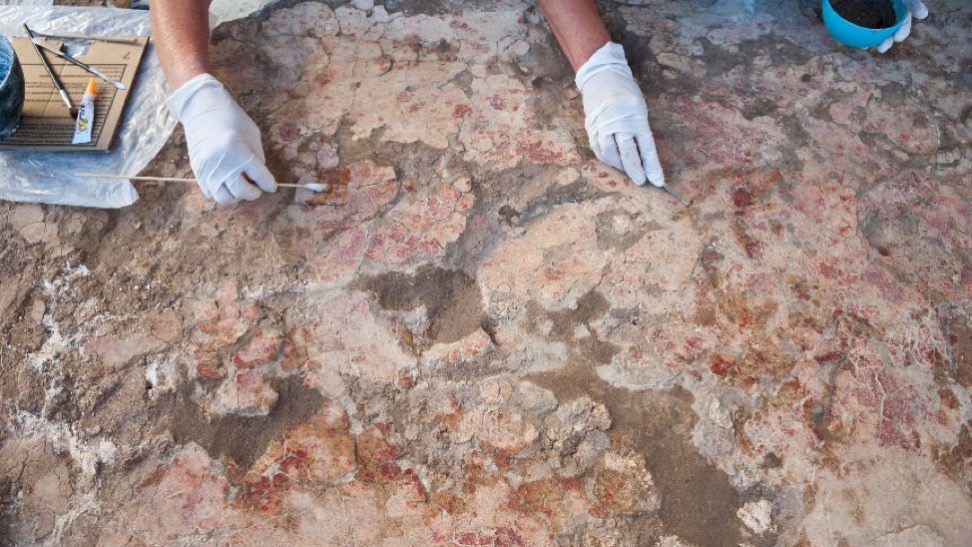
Pollentia (Alcúdia, Mallorca): Multidisciplinary research, conservation and diffusion in an insular Roman city
The importance of Pollentia lies in the fact that it is the maximum exponent of the Roman culture in the Balearic Islands and one of the most important cities in Hispania, with the particularity of being also a city located in a strategic place in some islands that were crucial in the commercial routes of the western Mediterranean. It is therefore one of the most important active classical archaeology projects in Spain. Pollentia is an ideal case for the study of the social transformations that took place in the long period of transition between the Roman period and the Middle Ages, since it witnesses a whole series of successive political changes. The research of the city has been completed with an intense work of training new generations of archaeologists.

Period
Roman Republican period, High Imperial and the transformation of the city during Late Antiquity, as well as its annexation to Islam at the beginning of the 10th century and the subsequent Catalan conquest of 1229.
Institution
Universitat de Barcelona, Archaeological and Archaeometric Research Team of the Universitat de Barcelona (ERAAUB), Institute of Archaeology of the Universitat de Barcelona (IAUB); Catalan Institute for Research and Advanced Studies (ICREA); Universidad de La Laguna; Roman City of Pol-lèntia Consortium.
Web and social networks
http://www.alcudia.net/Pollentia/es/
http://www.ciudadromanadepollentia.com/ (under construction)
https://www.ub.edu/ERAAUB/index.php/archaeological-sites/pollentia
https://www.icrea.cat/Web/ScientificStaff/miguel-angel-cau-ontiveros-304
https://www.facebook.com/pollentia
https://www.instagram.com/pollentiaciutatromana/?hl=es
https://twitter.com/pollentia_
Principal Investigator(s)
Institució Catalana de Recerca i Estudis Avançats (ICREA); director of the Archaeological and Archaeometric Research Team of the Universitat de Barcelona (ERAAUB).
Dra. Esther Chávez Álvarez
Universidad de La Laguna.
Dra. Catalina Mas Florit
Universitat de Barcelona, ERAAUB.
Location
Pollentia (Alcúdia, Mallorca).
LOCATION
RESULTS
Forum Research
- In the forum, the excavation in extension and restoration of the Capitol, the main religious temple of the city, has been carried out.
- Also in the foral area, the macellum (market) has been discovered, whose excavation in extension is very advanced.
- It has also been possible to explore new areas such as the taverns to the north of the forum, with spectacular results. The fire that devastated part of the city at the end of the 3rd century AD clearly affected these areas and the effects of the fire led to the creation of a small Pompeii. In the last campaign, a set of bronzes of great interest and complete ceramic materials were found.
- In the sector known as Temple II to the east, a spectacular opus sectile has been discovered, combining grey/black slate hexagons and white marble triangles. It seems to belong to a large public building, the excavation of which has barely begun, and which could correspond to the Roman basilica or another large public building.
One of the most spectacular results is perhaps the research of the necropolis sitting on the forum of the city, which had been traditionally considered to be of late antiquity and which has been demonstrated thanks to radiocarbon dating to be dated to the Islamic period. The most interesting thing, however, is that the burials are not in lateral decubitus as is normal in Islamic burials, but in supine decubitus reminiscent of Christian tombs. This allows us to speak of the existence of non-Islamic communities in Pollentia during the Islamic period and to raise the possible survival of Christian communities under the domination of the crescent.
Research in the medieval church of Santa Ana
- The medieval church of Santa Ana has also been excavated on the site of the Roman city, where the structure of a chapel built after the Catalan conquest of 1229 AD and its subsequent extension in the 15th century has been documented, along with an interesting pre-existing burial necropolis and important levels of the Islamic period.
Research in the necropolis
The current project has also allowed for the reopening of the Can Fanals necropolis in the south of the city, with the collaboration of the University of Portland (USA), where a row of tombs has been located above the natural terrain excavated as early as 1930, but also intact tombs that are providing extremely interesting trousseaux and human remains that provide exceptional information on funeral practices and on the population buried there.
Pollentia and its territory
The systematic investigation of the hinterland of Pollentia has also been initiated through the archaeology of the territory, incorporating geophysical prospecting and remote sensing, with the aim of understanding the transformation of the rural world from a diachronic perspective and the interaction between the countryside and the city, essential to understand the dynamics of a Roman city of the importance of Pollentia.
PICTURES
- Archaeologists Discover Port Structures from Ancient Greek City of Asine (Ancient origins 11/03/2025) - 12 March, 2025
- LiDAR study reveals 5,000-year-old fortified settlements (Heritage daily 11/03/2025) - 12 March, 2025
- Unlocking the Secrets of Jersey’s Le Câtillon II: A Celtic Settlement Discovered Near the Enigmatic Hoard (Arkeonews 12/03/2025) - 12 March, 2025

























